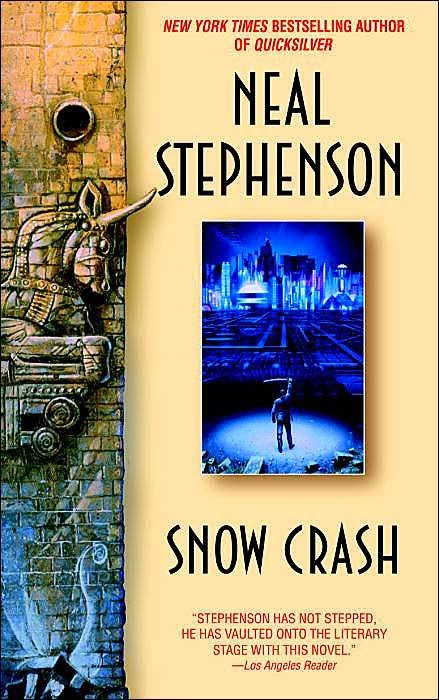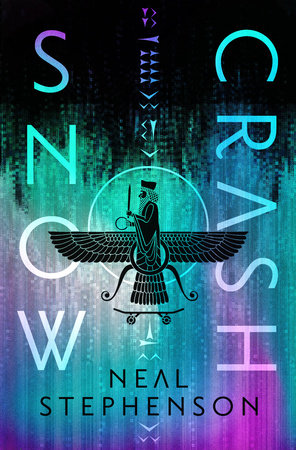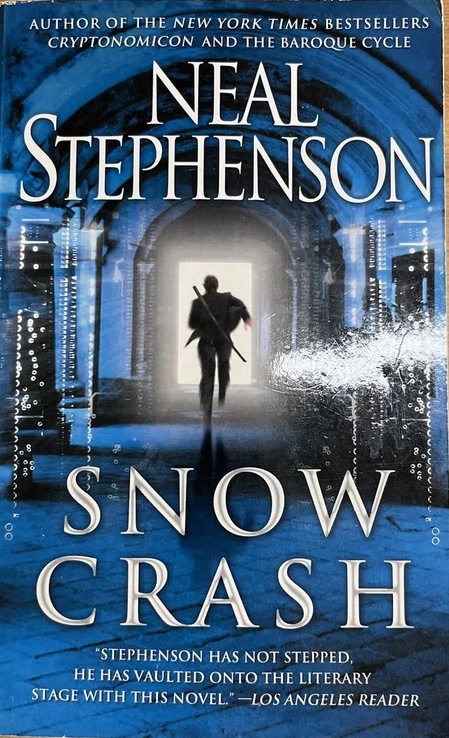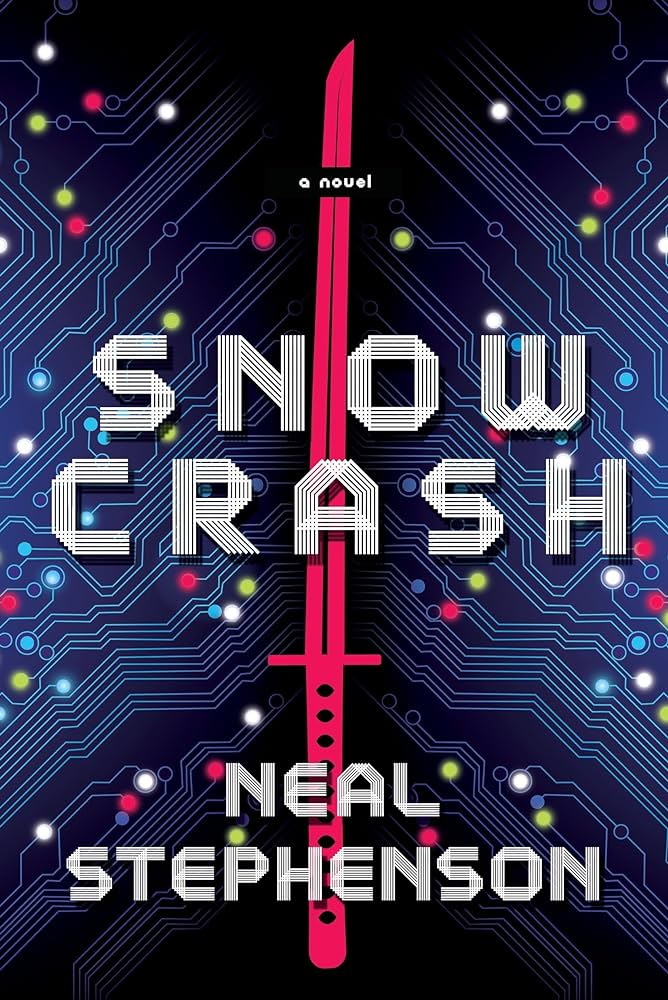SEMIOPUNK (24)
By:
August 1, 2024
An irregular, ongoing series of posts dedicated to surfacing examples (and predecessors) of the sf subgenre that HILOBROW was the first to name “semiopunk.”
BABEL (2022) | BABEL-17 (1966) | CAMP CONCENTRATION (1968) | A CANTICLE FOR LEIBOWITZ (1959) | CAT’S CRADLE (1963) | COSMONAUT KEEP (2000) | THE DIFFERENT GIRL (2013) | DOOM PATROL (1987–91) | THE EINSTEIN INTERSECTION (1967) | EMBASSYTOWN (2011) | ENGINE SUMMER (1979) | EXPLOITS AND OPINIONS OF DR. FAUSTROLL, PATAPHYSICIAN (1911) | FEERSUM ENDJINN (1994) | FLATLAND (1884) | FRIDAY (1982) | LE GARAGE HERMÉTIQUE (1976–79) | THE GLASS BEAD GAME (1943) | GLASSHOUSE (2006) | GRAVITY’S RAINBOW (1973) | THE HAMPDENSHIRE WONDER (1911) | LORD OF LIGHT (1967) | THE MAN WITH SIX SENSES (1927) | THE MOUNTAIN IN THE SEA (2022) | NINEFOX GAMBIT (2016) | ODD JOHN (1935) | PATTERN RECOGNITION (2003) | THE PLAYER OF GAMES (1988) | RIDDLEY WALKER (1980) | RODERICK (1980–83) | SNOW CRASH (1992) | THE SOFT MACHINE (1961) | SOLARIS (1961) | THE SPACE MERCHANTS (1953) | THE THREE STIGMATA OF PALMER ELDRITCH (1964) | TIME OUT OF JOINT (1959) | UBIK (1969) | VALIS (1981) | A VOYAGE TO ARCTURUS (1920) | VURT (1993) | WHITE NOISE (1985).
SNOW CRASH
Snow Crash, Stephenson’s first sci-fi novel, was developed from elements of a Ghost in the Shell-esque graphic novel that he’d abandoned; as such, it’s visionary yet goofy, deep yet two-dimensional, thrilling yet rambling and tedious, stylish yet stupid — which is fun.
It’s set not only in a cyberpunk-influenced, ambiguous-libertarian-utopian future Los Angeles, but also in the “Metaverse,” a virtual reality-based successor to the Internet — the users of which interact as “avatars” (a term this book didn’t coin but popularized), with one another as well as with software agents. But if you’re expecting William Gibson’s spare, neo-noir prose, you’ll be disappointed; Stephenson is a maximalist — diving down every open rabbit-hole. I’ve seen Snow Crash described as a satire of cyberpunk, and I might just amend that to: affectionate satire.
Snow Crash‘s Metaverse has influenced the development of everything from Second Life to the videogame Quake. Google co-founder Sergey Brin called Snow Crash one of his favorite novels. One of the developers of Google Earth noted The Metaverse as an influence. The concept of the Metaverse also inspired the rebrand of Facebook to Meta Platforms Inc. in 2021.
Prose limitations aside, Stephenson’s novel is a terrific thrill-ride. The quick-thinking, skateboard-riding courier Y.T. (for “Yours Truly”) is an impressive female hero; Hiro Protagonist, the half-black, half-Japanese hacker who teams up with her has awesome skills… though he’s not the protagonist. Raven, the story’s villain, is terrifying and oddly sympathetic; Uncle Enzo, the Mafia kingpin who takes a paternal interest in Y.T., is also a compelling figure.
As Mark Kingwell writes about the book (for HILOBROW): “The slang, the jokes, and the sexual politics have all aged poorly, alas. But the insights about democracy’s spectacular decline into spectral politics of identity, the dissolution of citizenship in a flurry of tech, power, and tribal enthusiasm, remain on point.”
Here’s where things get interesting for semioticians: Within the Metaverse, Hiro is offered a datafile named Snow Crash. Hackers who view the file (which is variously described as a virus, a drug, and a religion) suffer not only catastrophic computer problems but brain damage.
A massive infodump informs us that cultural information comes in discreet self-replicating packets, which can be transmitted like a virus or genetic code; and that the Sumerian language functions like the firmware programming language for the human brainstem, which supposedly functions as the BIOS for the brain itself. (In Stephenson’s recounting of the story of the Tower of Babel, the goddess Asherah personifies a linguistic virus created to control all humankind; the god Enki created a counter-program that caused humans to speak other languages.) The virus is a meme that’s buried in the human brain and forgotten until the story’s villains figure out how to unlock it and reprogram human minds.
“Snow Crash” is a version of the virus encoded in a bitmap image which can cause hackers (who are used to processing information in binary form) to suffer brain damage. That is to say: A mechanical-ish mental linguistic infrastructure exists in the human mind, and the digitization of hacker’s brains have made them subject to outside domination or hypnotization. Ingenious stuff.
I’ve already written about the language-is-a-virus conceopt (or conceit), in this SEMIOPUNK series — via a post on William Burroughs’ The Soft Machine. Burroughs posited language as a force alien to humankind, and as the culprit responsible for the growth of social, cultural, and economic control systems; he sought to challenge the reading and thinking habits of his audience — and in doing so to undermine totalizing systems of thought.
Stephenson is reworking Burroughs when he has Hiro determine that early religions and cultures dispelled information in the form of viruses, in order to control other people. Just as there appears to be a linguistic infrastructure to the human mind, there also may be an innate mental capacity or desire for religion, Hiro muses. Another hacker, Juanita, makes the case in a brutally simplified fashion: people “have religious receptors in their skulls.” We’re wired to seek meaning, and this wiring renders us easily manipulated.
If Burroughs’s paranoia can leave you feeling a bit wrung out, Stephenson’s cartoonish paranoia is more entertaining, even goofier — which is to say more Pynchon-esque. Which is why this novel is such a fun read, even if it is rather ham-handed in comparison with its literary forebears.
Semioticians, who don’t seek meaning (i.e., what things mean) so much as they seek to analyze and comprehend how meaning operates within specific semiospheres (i.e., how things mean), enjoy the sort of meta-analysis about meaning in which Hiro engages, even if we’ve already encountered it in Burroughs, Pynchon, Dick, etc. Perhaps we have meta-analysis receptors wired into our skulls….
JOSH GLENN’S *BEST ADVENTURES* LISTS: BEST 250 ADVENTURES OF THE 20TH CENTURY | 100 BEST OUGHTS ADVENTURES | 100 BEST RADIUM AGE (PROTO-)SCI-FI ADVENTURES | 100 BEST TEENS ADVENTURES | 100 BEST TWENTIES ADVENTURES | 100 BEST THIRTIES ADVENTURES | 75 BEST GOLDEN AGE SCI-FI ADVENTURES | 100 BEST FORTIES ADVENTURES | 100 BEST FIFTIES ADVENTURES | 100 BEST SIXTIES ADVENTURES | 75 BEST NEW WAVE SCI FI ADVENTURES | 100 BEST SEVENTIES ADVENTURES | 100 BEST EIGHTIES ADVENTURES | 75 BEST DIAMOND AGE SCI-FI ADVENTURES | 100 BEST NINETIES ADVENTURES | 75 BEST HADRON AGE SCI-FI ADVENTURES.




